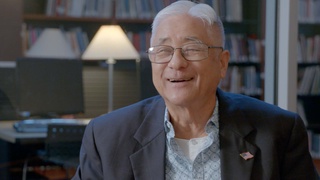Interviews
Becoming a member of nikkei community (Japanese)
(Japanese) I moved to America to make sushi, so I hadn’t really thought about anything else, like the nikkei community. I came here as a migrant worker, so I thought that I would eventually go back to Japan and open my own restaurant in Japan with the money I’d earned here. But when I opened my own restaurant and started business, after finishing my second contract of three years, I realized that there was a really active community here, something I wasn’t aware of, and I started to become more and more conscious about things I didn’t learn in Japan. There were nikkei internment camps and other things that happened to people. I’d never heard of them. They went through such hardship. In April every year, there’s a bus that goes to Manzanar. I had wanted to visit the place - I always thought about it - but maybe I should start local, and then get into such community. That’s how I started. And I realized that there was a community for nikkei people and for new issei like us, so it’s been such an encouragement for me to be able to work in the community built on hard work of nikkei people.
Date: April 16, 2016
Location: California, US
Interviewer: Mistue Watanabe
Contributed by: Watase Media Arts Center, Japanese American National Museum







